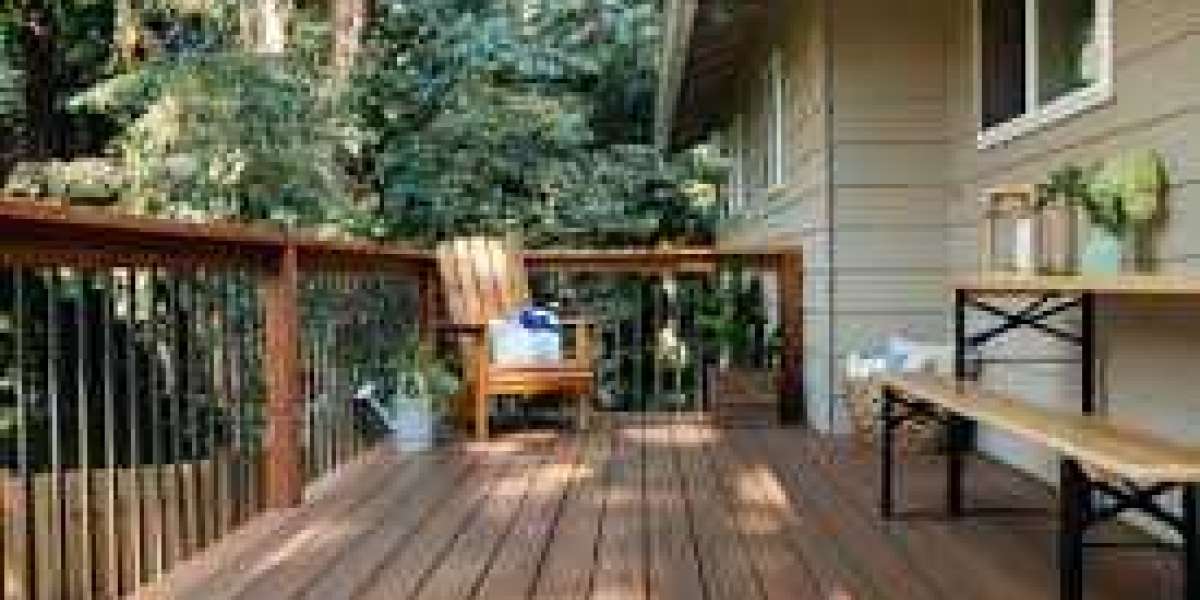A well-maintained deck can be a beautiful addition to any home, providing an outdoor space for relaxation and entertainment. However, exposure to the elements can take a toll on your deck boards over time, leading to weathering, fading, and eventual damage. One of the most effective ways to protect your deck and prolong its life is by properly sealing the deck boards. Sealing your deck provides a protective barrier that shields the wood from moisture, UV rays, and other environmental factors, helping to maintain both its appearance and structural integrity. Here’s why sealing your deck is essential.
1. Protection from Moisture Damage
Wood is naturally porous, which means it can absorb moisture from rain, snow, and humidity. Over time, this absorbed moisture can cause the wood to swell, warp, crack, and even rot. Water damage can also lead to the growth of mold and mildew, which not only affects the appearance of your deck but can also cause health issues if left untreated.
- How Sealing Helps: A high-quality deck sealant creates a protective waterproof barrier that prevents moisture from penetrating the wood. By keeping the wood dry, sealing helps prevent swelling, warping, and rot, which are common problems associated with untreated wood.
2. UV Protection to Prevent Fading
Exposure to the sun’s UV rays can significantly impact the appearance of your deck. Over time, UV rays cause the wood to fade, lose its color, and become weathered. Without protection, the wood can turn gray and lose its rich, natural hues.
- How Sealing Helps: Many deck sealers contain UV inhibitors that protect the wood from sun damage. By sealing your deck, you preserve its vibrant color and prevent fading. This UV protection is particularly beneficial for wooden decks that are regularly exposed to the sun, helping to maintain their aesthetic appeal.
3. Prevention of Mold and Mildew Growth
In addition to moisture, mold and mildew can thrive on wooden decks that are exposed to constant dampness. This is especially true in regions with high humidity or frequent rainfall. Mold and mildew can cause unsightly black or green stains, and the spores can be harmful to your health if inhaled.
- How Sealing Helps: Sealing your deck helps prevent moisture buildup, which in turn reduces the chances of mold and mildew growth. Sealants can also contain antimicrobial agents that specifically target mold and mildew, offering an added layer of protection to your deck.
4. Increased Longevity of Deck Boards
Wooden decks are a significant investment, and sealing them can help increase their lifespan. Exposure to the elements can cause deck boards to deteriorate more quickly, leading to costly repairs or even premature replacement.
- How Sealing Helps: Sealing your deck protects it from the damaging effects of moisture, UV rays, and environmental wear, ultimately extending the life of the boards. A well-sealed deck can last for decades, saving you money in the long run by reducing the need for repairs and replacement.
5. Enhanced Appearance and Curb Appeal
A properly sealed deck looks cleaner, richer, and more inviting. The sealant enhances the natural beauty of the wood, bringing out its color and grain. In contrast, an unsealed deck can appear faded, weathered, and aged, which detracts from the overall appearance of your home.
- How Sealing Helps: Sealing your deck helps maintain its visual appeal by enriching the wood’s natural color and texture. Whether you choose a clear sealant that highlights the wood’s natural look or a tinted one to add color, sealing improves your deck’s overall aesthetic and curb appeal.
6. Easier Cleaning and Maintenance
A sealed deck is easier to clean and maintain compared to an unsealed one. Dirt, grime, and stains are less likely to penetrate the surface of sealed wood, making it easier to wipe away spills and clean debris. Additionally, sealed decks are less likely to absorb oils, food, or other substances that can stain the surface.
- How Sealing Helps: The smooth, waterproof surface created by a sealant makes cleaning much simpler. Instead of scrubbing and dealing with deep stains that have penetrated the wood, a simple sweep and rinse will often suffice. Regular maintenance is also more efficient, ensuring your deck always looks its best.
7. Resistance to Insect Damage
Wood is susceptible to damage from termites, ants, and other insects that can burrow into the material and cause structural damage. Insects can weaken the integrity of the deck, leading to costly repairs or even safety hazards.
- How Sealing Helps: Sealing your deck creates a barrier that makes it more difficult for insects to penetrate the wood. Some sealants even contain insect-repelling ingredients, offering added protection against pests. While it won’t completely eliminate the risk of insect damage, sealing can help reduce the likelihood of infestations.
8. Prevention of Splinters and Cracks
Wood naturally expands and contracts with temperature changes and moisture fluctuations. Over time, this can cause the wood to crack, splinter, or become rough to the touch. These imperfections can affect the safety and comfort of your deck.
- How Sealing Helps: Sealing helps protect the wood’s surface from the damaging effects of moisture and temperature fluctuations. A well-sealed deck is less likely to develop cracks or splinters, ensuring that the surface remains smooth and safe to walk on. This also improves the comfort of the deck, especially if you spend a lot of time barefoot outdoors.
9. Cost-Effectiveness
While sealing your deck requires an initial investment of time and money, it is a cost-effective way to preserve the value and longevity of your deck. Proper sealing reduces the need for frequent repairs, refinishing, and premature replacement, which can be expensive in the long run.
- How Sealing Helps: By protecting your deck from the elements and maintaining its structural integrity, sealing helps avoid costly repairs and replacements. Regular sealing and maintenance ensure that your deck remains in excellent condition, providing you with a high return on your investment.
10. Seasonal Protection
The changing seasons can take a toll on your deck. In the winter, snow and ice can cause damage, while in the summer, intense heat and sun can cause the wood to dry out and fade. Sealing your deck offers year-round protection against these seasonal elements.
- How Sealing Helps: A good sealant provides a protective barrier against snow, ice, and extreme temperatures. In the winter, it prevents moisture from entering the wood, which can freeze and cause cracking. In the summer, it blocks UV rays and prevents the wood from drying out. This ensures that your deck stays in top condition, regardless of the season.
How to Seal Your Deck Properly
To ensure the best results, it’s important to follow the right steps when sealing your deck:
- Clean the Deck: Before applying the sealant, thoroughly clean the deck to remove dirt, debris, and stains. Use a deck cleaner or a mild soap solution, and rinse the deck with water.
- Allow the Deck to Dry: Ensure the deck is completely dry before applying the sealer. This may take a few hours or even a day, depending on the weather conditions.
- Apply the Sealant: Using a brush, roller, or sprayer, apply the sealant evenly across the surface of the deck. Be sure to follow the manufacturer’s instructions regarding the number of coats and drying times.
- Allow for Drying Time: After applying the sealant, let it dry completely before using the deck. This usually takes 24–48 hours, depending on the product and weather conditions.
Conclusion
Sealing your deck boards is one of the most important steps in ensuring the longevity, functionality, and beauty of your outdoor space. By providing protection against moisture, UV rays, insects, and other environmental factors, a quality sealant helps preserve the wood, enhance its appearance, and reduce the need for costly repairs. Whether you have a wooden deck or a composite deck, proper sealing is essential for maintaining the deck’s integrity and extending its life. Taking the time to seal your deck properly will pay off in the long run, ensuring that your outdoor oasis remains a safe, attractive, and functional space for years to come.
















